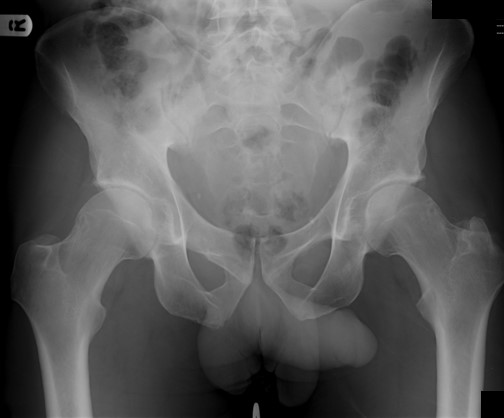Penile shadow artefact overlapping fractures
DOI:
https://doi.org/10.7577/radopen.1202Keywords:
Anatomical over-projection, Anatomical noise, Artefact, Artifact, Pelvic radiography, Penis, Penile shadow, Superimposing organ, Foreign bodyAbstract
Soft tissue shadows are commonly seen on pelvic radiographs, and radiographers may overlook or are unaware that these shadows could be artefacts. In a case study, shadow of a penis superimposed with the fracture lines at pubic ramus and it was questioned whether a fracture of ramus ischio-pubis is present. Further radiographic views were performed to demonstrate the fractures without any artefact. There are other possible pelvic artefacts that may be seen and neglected on pelvic radiographs, thus it may lead to misdiagnosis of pelvic fracture. This essay should be served as a reminder for radiographers to recognize artefacts and differentiate it from pathology.
References
Markowitz, R. I. (2007). Wet diaper artifact. Pediatric Radiology, 37(12), 1303.
http://dx.doi.org/10.1007/s00247-007-0641-8 PMid:17926027
Markowitz, R. I., Altes, T. A., & Jaramillo, D. (2009). What causes the "wet diaper" artifact? computed tomography and magnetic resonance observations. Clinical Imaging, 33(3), 226-230. http://dx.doi.org/10.1016/j.clinimag.2008.09.013 PMid:19411030
Murphy, I. G., Murphy, C. G., & Heffernan, E. J. (2014). John Thomas sign--a memorable but misleading sign in hip fractures. Orthopaedics & Traumatology Surgery & Research, 100(2), 203-206.http://dx.doi.org/10.1016/j.otsr.2013.12.017 PMid:24582209
Thomas, M. C., Lyons, B. D., & Walker, R. J. (1998). John Thomas sign: common distraction or useful pointer? Medical Journal of Australia, 169(11-12), 670.
PMid:9887926
Turton, D. B., & Silverman, E. D. (1994). Tampon artifact in bone scintigraphy. Clinical Nuclear Medicine, 19(12), 1103-1104. http://dx.doi.org/10.1097/00003072-199419120-00015 PMid:7874813

Downloads
Published
How to Cite
Issue
Section
License
Authors who publish with this journal agree to the following terms:- Authors retain copyright and grant the journal right of first publication, with the work after publication simultaneously licensed under a Creative Commons Attribution License that allows others to share the work with an acknowledgement of the work's authorship and initial publication in this journal.
- Authors are able to enter into separate, additional contractual arrangements for the non-exclusive distribution of the journal's published version of the work (e.g., post it to an institutional repository or publish it in a book), with an acknowledgement of its initial publication in this journal.
- Authors are permitted and encouraged to post their work online (e.g., in institutional repositories or on their website) prior to and during the submission process, as it can lead to productive exchanges, as well as earlier and greater citation of published work (See The Effect of Open Access).



